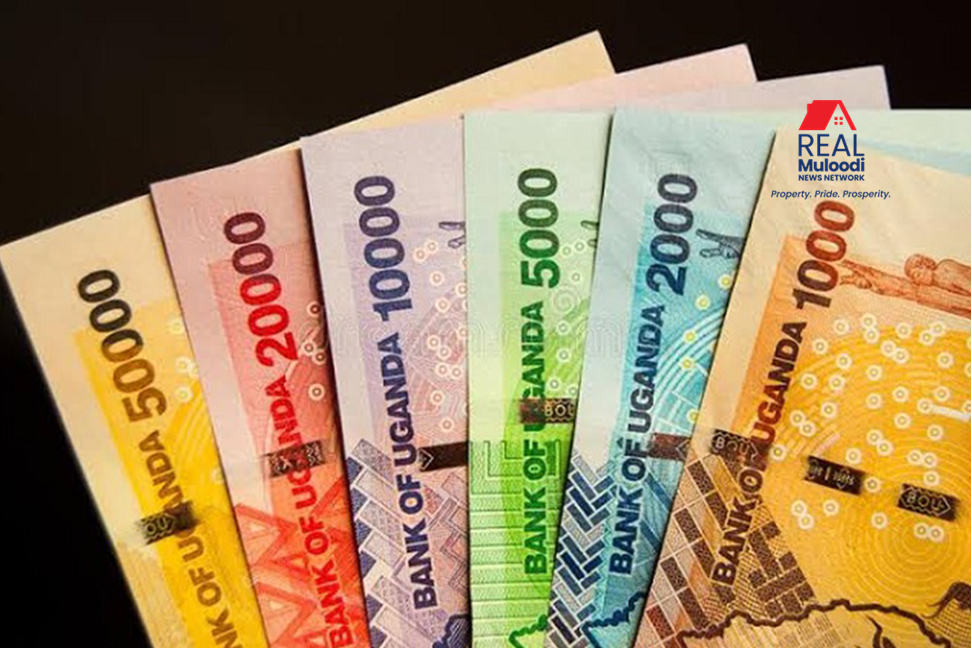UGANDA, Kampala | Real Muloodi News | Recent data released by the Finance Ministry indicates a concerning trend for the Ugandan economy, as the Uganda shilling experienced a depreciation of 0.64 per cent last month, trading at an average mid-rate of USh3,805.03/US$ compared to USh3,780.66/US$ previously.
During the trading session on Wednesday 21st February, 2024, the shilling further weakened to close at lows of 3885/3895, nearing the psychological level of 3900.
This depreciation brings the Uganda shilling to nearly a two-year low, with the last similar trading range observed in 2020, when it touched lows of 3,945 to the dollar.
Market analysts anticipate that end-of-month inflows from exporters and non-governmental organizations (NGOs) may mitigate current dollar demand in the upcoming weeks.
The Bank of Uganda (BOU) reports that while the shilling has demonstrated stability in recent months, the recent depreciation pressures stem mainly from increased dollar demand in sectors such as energy and manufacturing.
Dr. Tumubweinee Twinemanzi, executive director in charge of supervision at BOU, emphasized the central bank’s focus on managing volatility in the exchange rate, aiming for stability rather than specific rate levels.
However, analysts like Stephen Kaboyo, managing director at Alpha Capital, express concerns over the sustained weakening trend of the shilling.
Kaboyo highlights potential consequences such as increased fuel and production costs, ultimately contributing to inflationary pressures within the economy.
In the money markets, Wednesday’s session saw continued pressure as clients remitted taxes, with overnight yields averaging 11.16%, according to Absa.
The Bank of Uganda conducted a treasury bond auction for 5-year and 15-year bonds, with yields clearing at averages of 14.60% and 16.30%, respectively.
Additionally, the Bank of Uganda is set to hold a Treasury Bill auction on February 28, 2024.
The Ministry of Finance attributes the shilling’s depreciation to high dollar demand from key sectors such as manufacturing, oil, telecommunications, and energy.
It notes a reduction in lending rates for both shilling and foreign currency-denominated credit from November to December 2023, partly due to stable inflation rates.
The data release also reveals stable yields on Treasury Bills for various tenors in January 2024, with slight increases observed in the annualized yield for the 364-day tenor.
Private Sector Credit increased by 1.3% to Shs21.7 trillion in December 2023, reflecting improved economic activity and lower lending rates.
In terms of trade, Uganda’s trade deficit narrowed by 9.9% to $269.87 million in December 2023, attributed to reduced import bills and increased export earnings.
Export earnings saw a slight increase of 0.2% compared to November 2023, primarily driven by higher earnings from cotton, sim, and tobacco.
Conversely, the value of merchandise imports decreased by 3.1% due to reduced private sector imports, particularly in wood products, electricity, and petroleum.
However, domestic revenue collections in January 2024 fell short of the month’s target, mainly due to lower-than-expected collections of Value Added Tax (VAT), Excise Duty, and taxes on international trade.
Meanwhile, the Ministry of Finance, Planning, and Economic Development (MoFPED) unveiled its December 2023 economic performance report on 17th January, 2024, revealing a notable outperformance in rental income tax amidst an overall domestic revenue shortfall.
The report highlights record-breaking rental income tax revenues, surpassing its monthly target by USh10.61 billion and marking a historic revenue of over USh101 billion for the quarter – a significant quarterly increase of USh30.77 billion compared to the same period last year.
The impressive results in rental income tax come at a time when the majority of Uganda’s domestic revenue streams are faltering.
Despite this revenue shortfall, government expenditure and net lending were lower than programmed, resulting in a deficit of USh926.59 billion, lower than the planned deficit of USh1.6 trillion.
Inflation trends varied across East African Community (EAC) partner states, with Uganda and Kenya experiencing increases, while Tanzania remained unchanged, and Rwanda saw a decline.
All currencies within the EAC region depreciated against the US Dollar, with Kenya experiencing the highest depreciation rate at 3.6%, followed by Rwanda and Uganda at 1.0% and 0.6%, respectively.
Additionally, the Tanzanian Shilling and Burundian Franc depreciated by 0.2%.
The economic implications of the Uganda shilling’s depreciation underscore the need for proactive measures to stabilize the currency and mitigate inflationary pressures, particularly in key sectors such as fuel and production.
READ MORE LIKE THIS:
Rental Income Tax Shines in December 2023 Amidst Widespread Revenue Shortfalls
Uganda’s Rental Income Tax Outperforms as URA Intensifies Nationwide Tax Compliance



